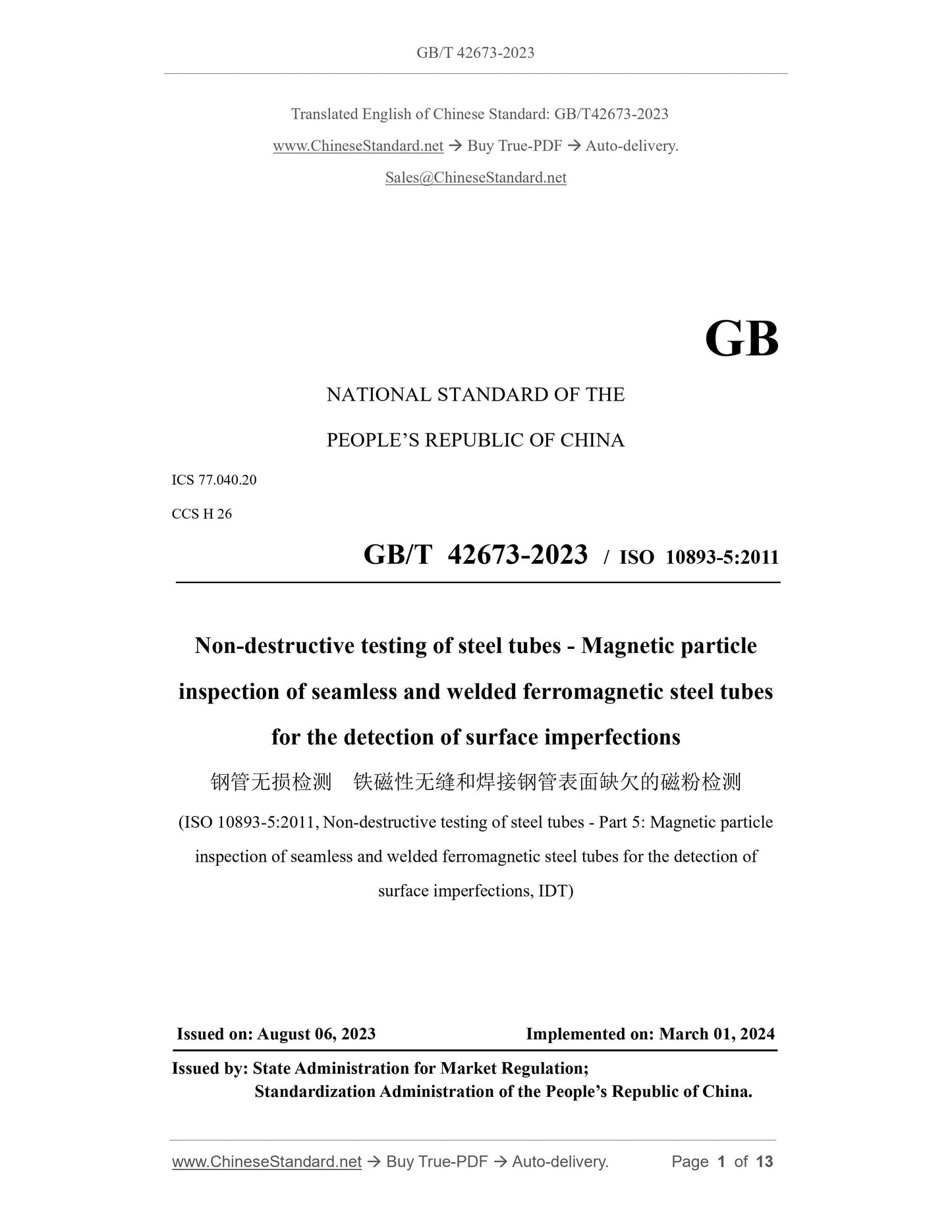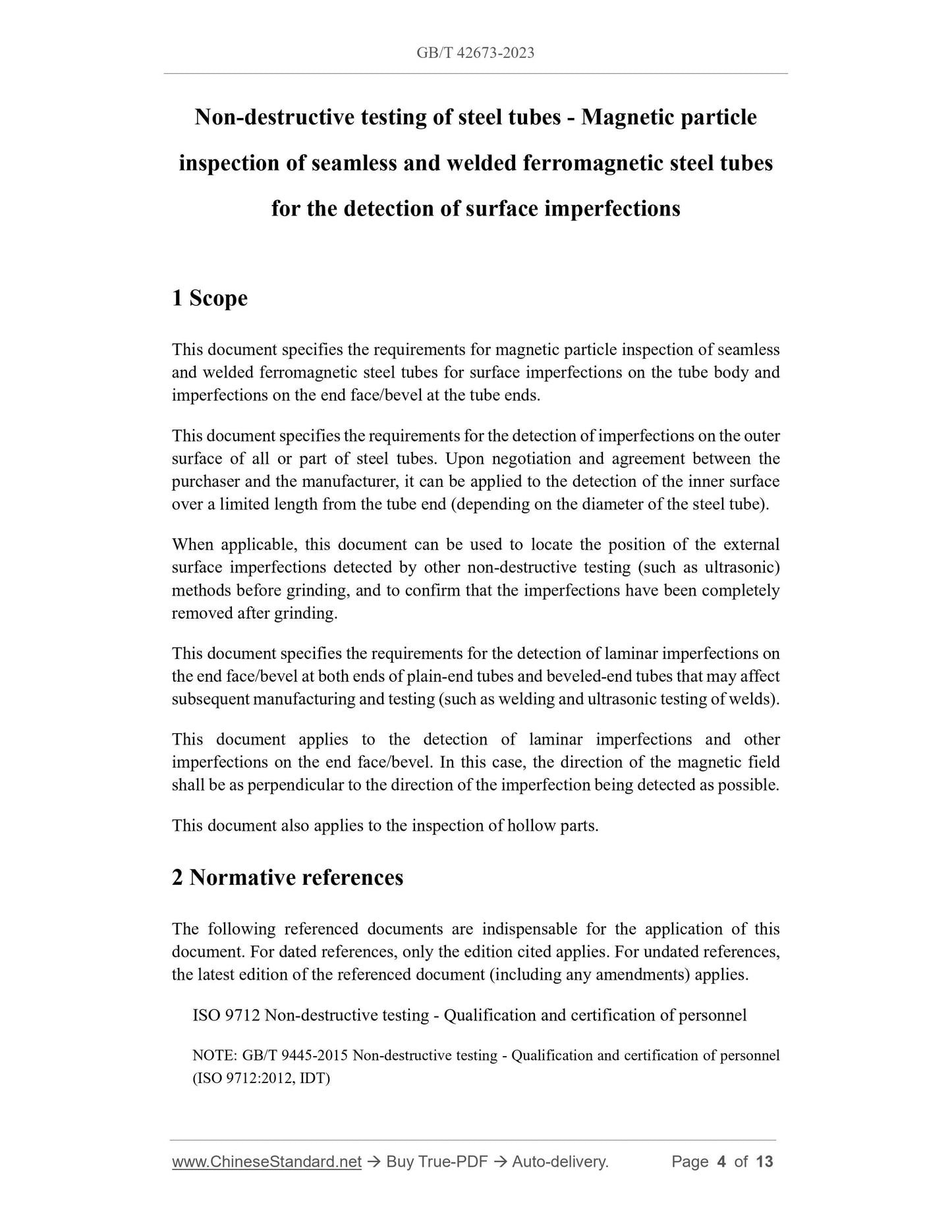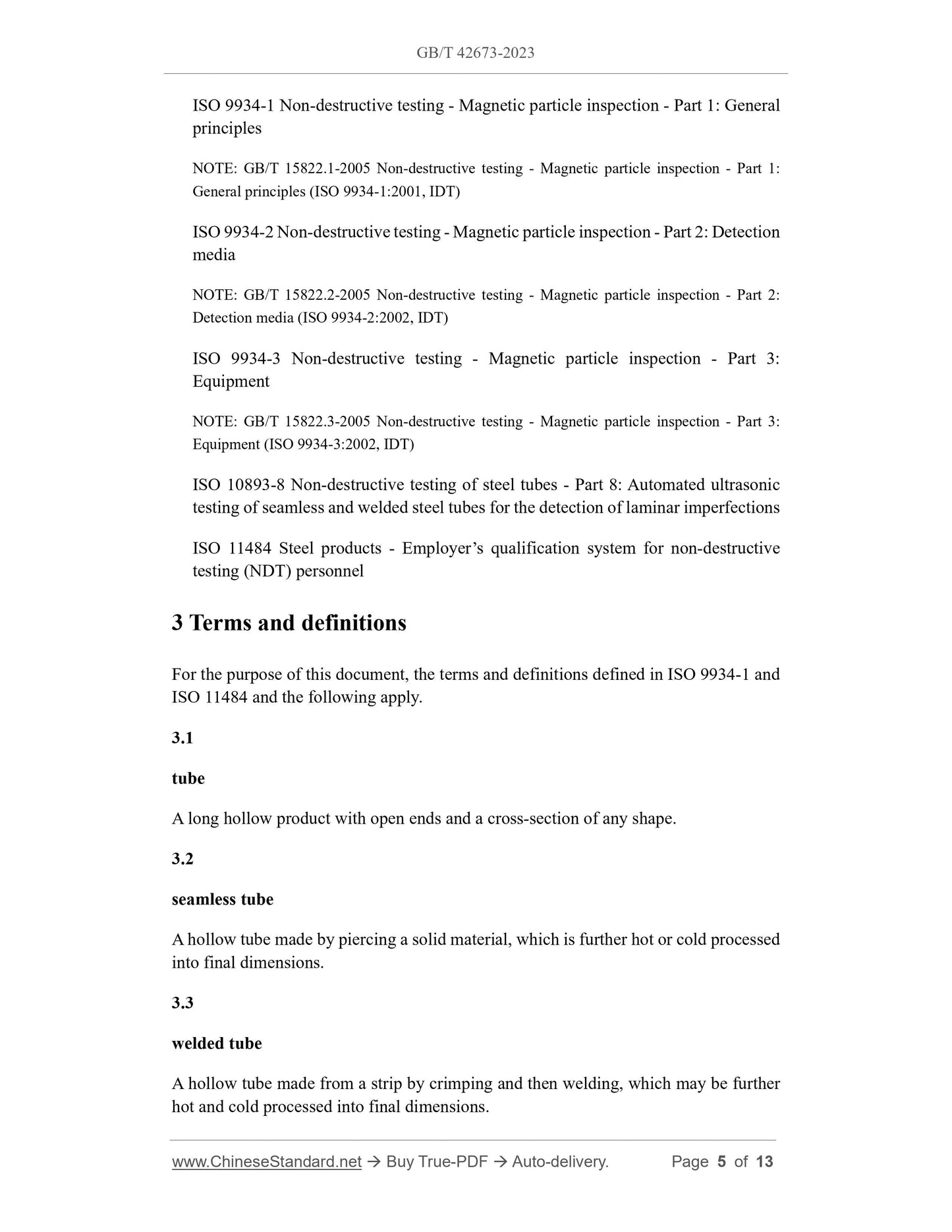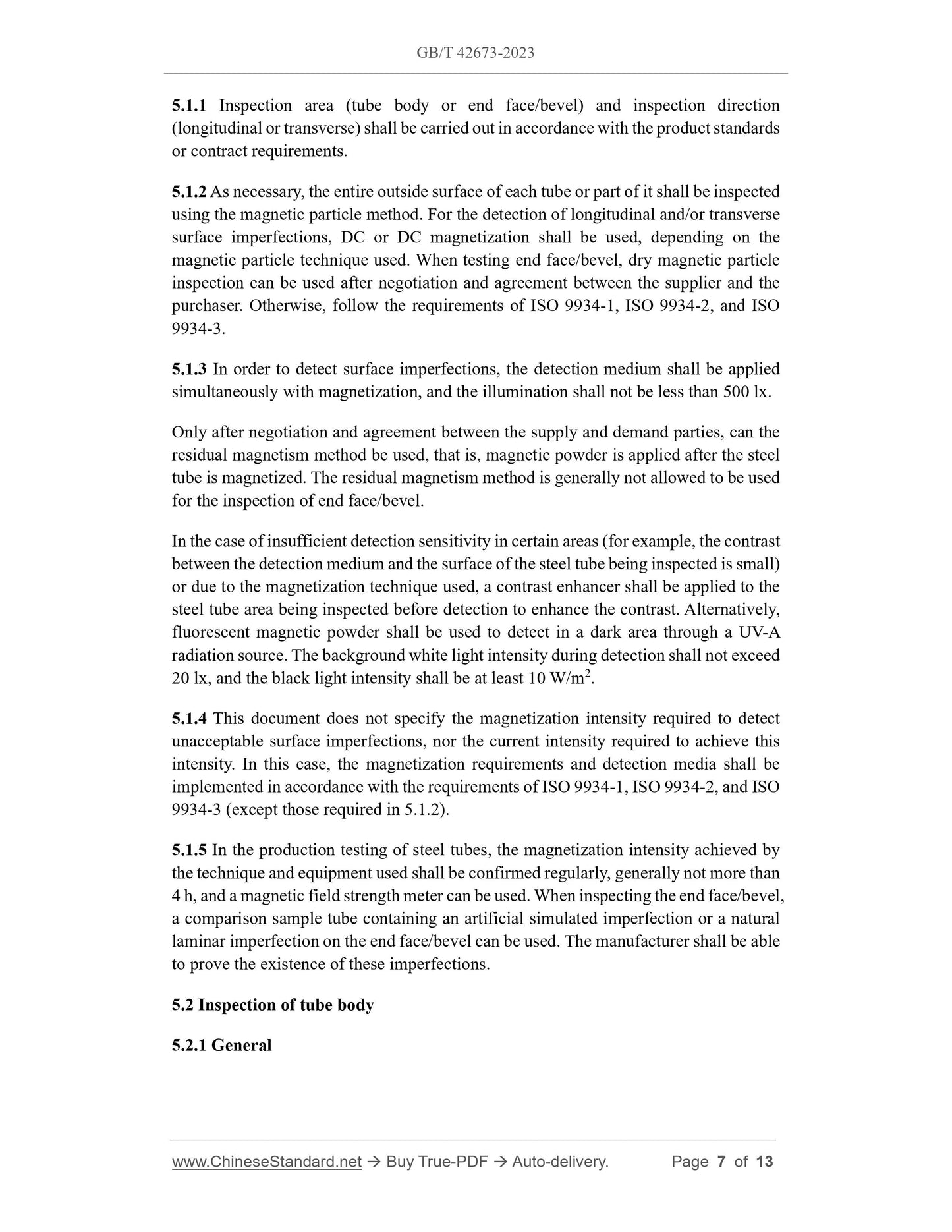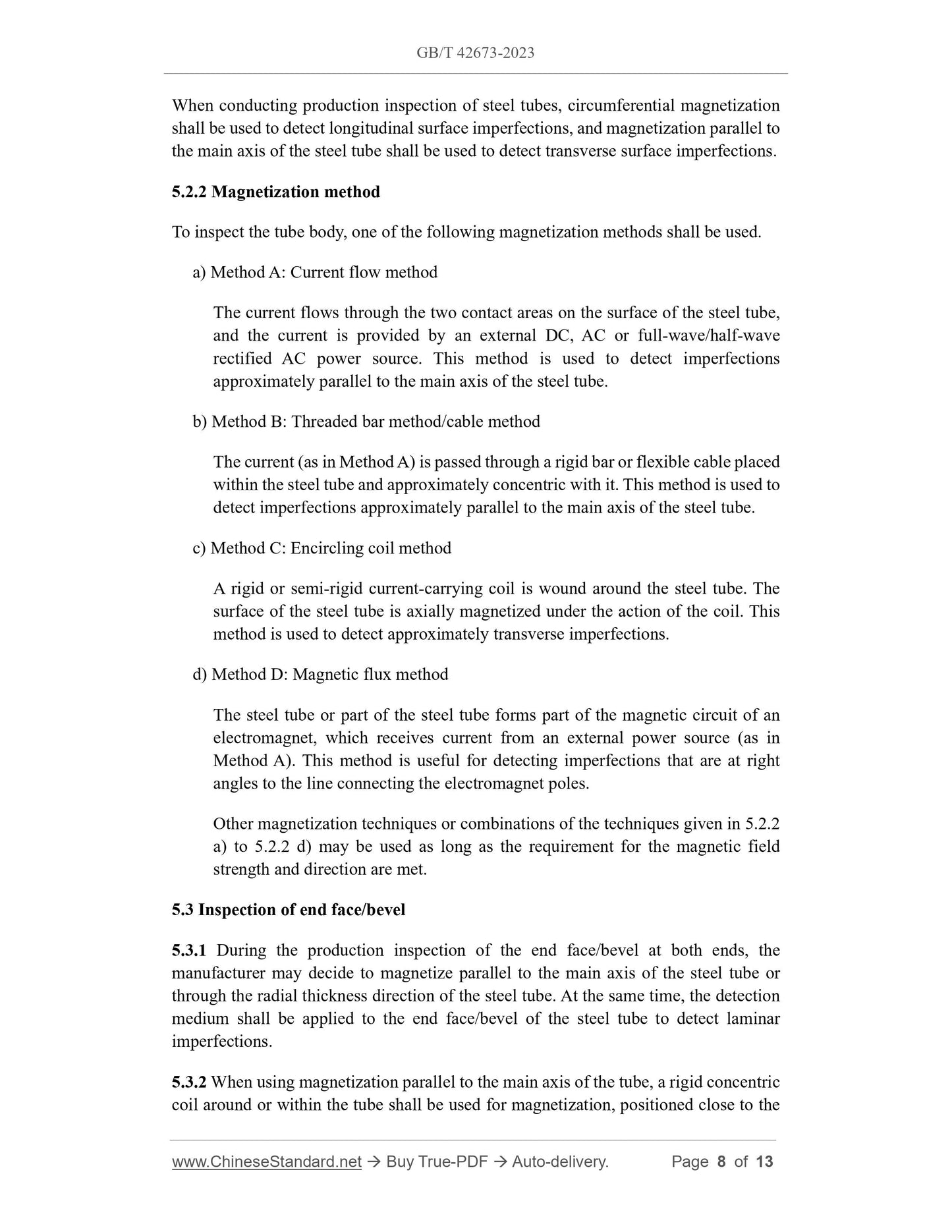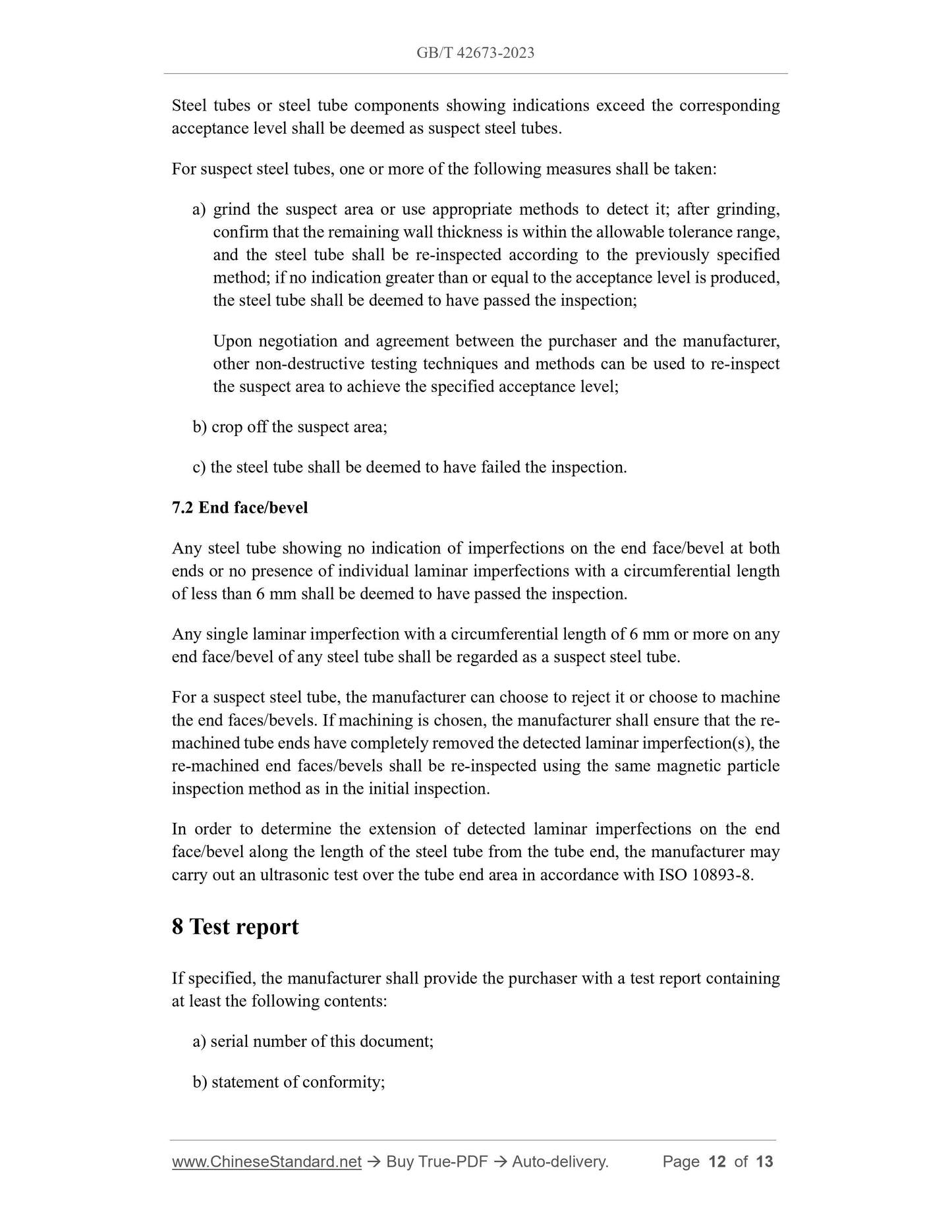1
/
of
7
www.ChineseStandard.us -- Field Test Asia Pte. Ltd.
GB/T 42673-2023 English PDF (GB/T42673-2023)
GB/T 42673-2023 English PDF (GB/T42673-2023)
Regular price
$170.00
Regular price
Sale price
$170.00
Unit price
/
per
Shipping calculated at checkout.
Couldn't load pickup availability
GB/T 42673-2023: Non-destructive testing of steel tubes - Magnetic particle inspection of seamless and welded ferromagnetic steel tubes for the detection of surface imperfections
Delivery: 9 seconds. Download (and Email) true-PDF + Invoice.Get Quotation: Click GB/T 42673-2023 (Self-service in 1-minute)
Newer / historical versions: GB/T 42673-2023
Preview True-PDF
Scope
This document specifies the requirements for magnetic particle inspection of seamlessand welded ferromagnetic steel tubes for surface imperfections on the tube body and
imperfections on the end face/bevel at the tube ends.
This document specifies the requirements for the detection of imperfections on the outer
surface of all or part of steel tubes. Upon negotiation and agreement between the
purchaser and the manufacturer, it can be applied to the detection of the inner surface
over a limited length from the tube end (depending on the diameter of the steel tube).
When applicable, this document can be used to locate the position of the external
surface imperfections detected by other non-destructive testing (such as ultrasonic)
methods before grinding, and to confirm that the imperfections have been completely
removed after grinding.
This document specifies the requirements for the detection of laminar imperfections on
the end face/bevel at both ends of plain-end tubes and beveled-end tubes that may affect
subsequent manufacturing and testing (such as welding and ultrasonic testing of welds).
This document applies to the detection of laminar imperfections and other
imperfections on the end face/bevel. In this case, the direction of the magnetic field
shall be as perpendicular to the direction of the imperfection being detected as possible.
This document also applies to the inspection of hollow parts.
Basic Data
| Standard ID | GB/T 42673-2023 (GB/T42673-2023) |
| Description (Translated English) | Non-destructive testing of steel tubes - Magnetic particle inspection of seamless and welded ferromagnetic steel tubes for the detection of surface imperfections |
| Sector / Industry | National Standard (Recommended) |
| Classification of Chinese Standard | H26 |
| Classification of International Standard | 77.040.20 |
| Word Count Estimation | 10,110 |
| Date of Issue | 2023-08-06 |
| Date of Implementation | 2024-03-01 |
| Issuing agency(ies) | State Administration for Market Regulation, China National Standardization Administration |
Share
